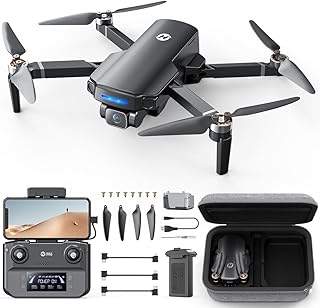Drones in Search and Rescue: Saving Lives
Drones, once primarily associated with recreational use and hobbyists, have rapidly become indispensable tools in the field of search and rescue (SAR). Their versatility, affordability, and ability to access challenging terrains have revolutionized the way SAR operations are conducted, often proving to be lifesavers.
Here's how drones are transforming SAR:
1. Enhanced Situational Awareness:
* Rapid Deployment: Drones can be deployed quickly, providing a real-time aerial view of the search area. This allows SAR teams to quickly assess the situation and prioritize their efforts.
* Wide Coverage: Drones can cover vast areas, especially in challenging terrain, in a fraction of the time it would take for ground teams. This dramatically increases the chance of locating a missing person.
* Thermal Imaging: Thermal cameras mounted on drones can detect heat signatures, even in dense foliage or darkness, making it easier to locate lost individuals.
2. Improved Search Efficiency:
* Targeted Search: By analyzing aerial imagery and data, drones can identify potential areas of interest, allowing SAR teams to focus their efforts on the most likely locations.
* Real-Time Communication: Drones can transmit live video feeds and data to ground teams, providing constant updates on the search progress and facilitating effective communication.
* Data Collection: Drones can capture high-resolution images and videos, creating detailed maps and 3D models of the search area, which can be used for future planning and investigations.
3. Minimizing Risk:
* Dangerous Environments: Drones can safely access hazardous areas, such as cliff edges, steep slopes, and dense forests, where ground teams might face significant risks.
* Reduced Personnel Exposure: Utilizing drones reduces the need for ground teams to enter potentially dangerous areas, minimizing the risk of accidents and injuries.
4. Expanding Capabilities:
* Delivery of Supplies: Drones can deliver essential supplies, such as medical kits, food, and water, to stranded individuals.
* Communication Relay: Drones can act as communication relays, providing a vital link between isolated SAR teams and emergency responders.
Examples of Success Stories:
* Hurricane Harvey (2017): Drones were used to assess damage and locate survivors in the aftermath of the devastating hurricane.
* Mount Everest (2019): Drones helped locate and rescue a climber who had fallen into a crevasse.
* Wildfires (ongoing): Drones are increasingly used to monitor wildfires, assess damage, and guide firefighting efforts.
Challenges and Concerns:
* Regulations: The use of drones in SAR operations needs to be carefully regulated to ensure safety and privacy.
* Technology Limitations: Battery life, weather conditions, and signal interference can limit the effectiveness of drones.
* Privacy Concerns: The use of drones in SAR operations must be conducted with respect for individual privacy.
Conclusion:
Drones are revolutionizing the way search and rescue operations are conducted, offering numerous advantages that enhance safety, efficiency, and effectiveness. While challenges remain, the use of drones in SAR is a rapidly evolving field with the potential to save countless lives.


